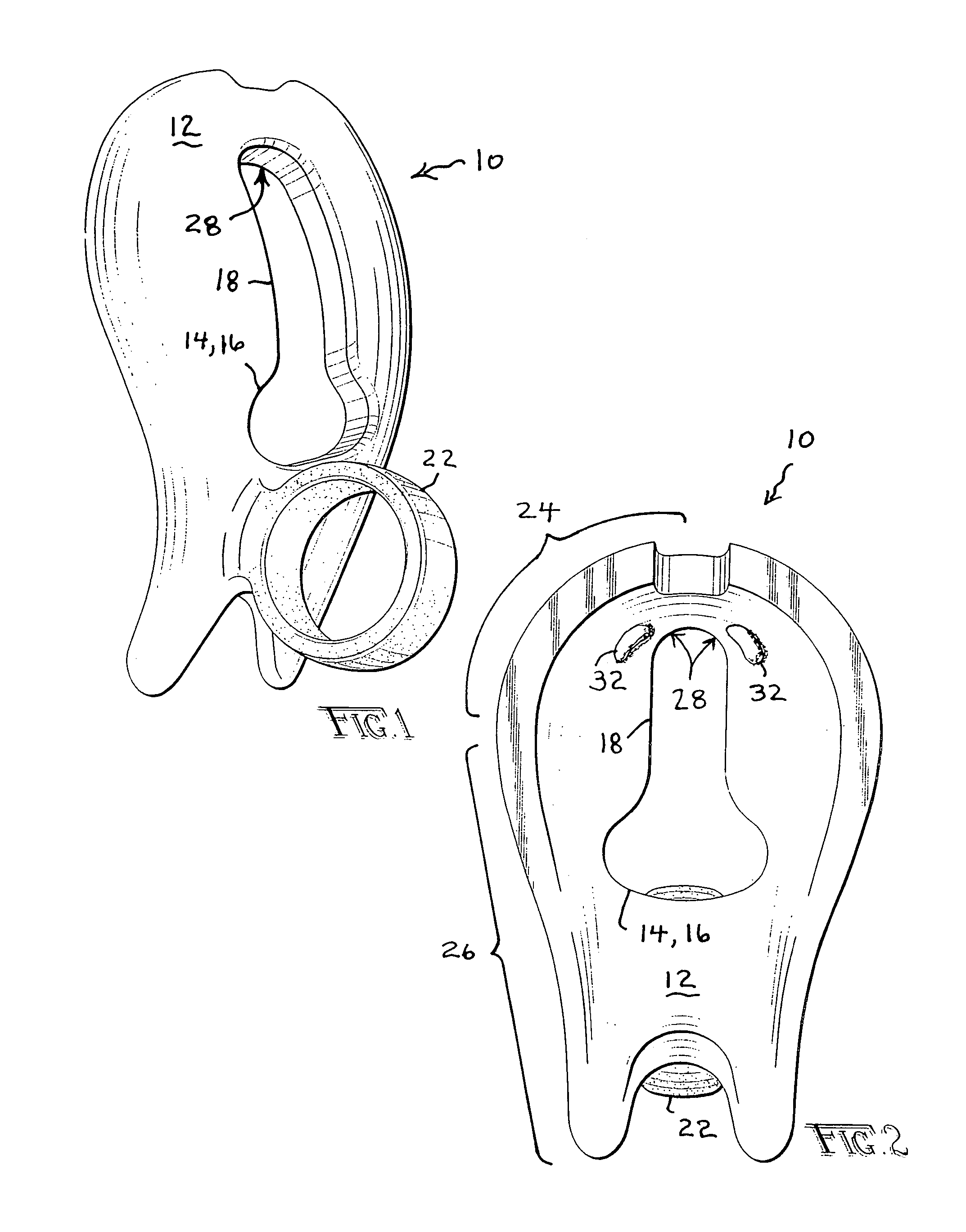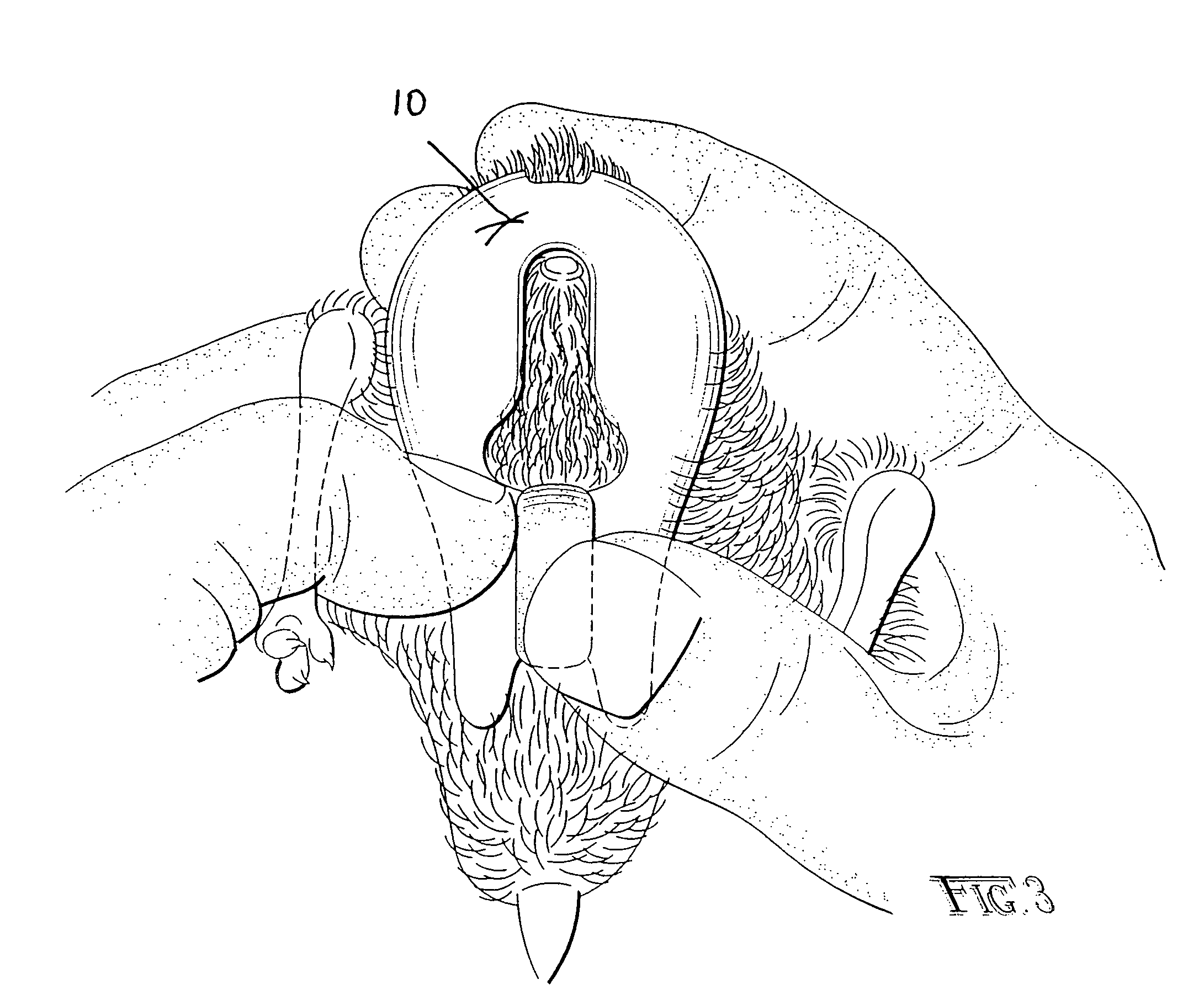Handheld examination holder for avian hatchlings, and gender examination process
a technology for examining holder and hatchlings, applied in the field of livestock immobilization apparatus, can solve the problems of causing harm or premature death of hatchlings, unwanted bruising, and forming suspicions
- Summary
- Abstract
- Description
- Claims
- Application Information
AI Technical Summary
Benefits of technology
Problems solved by technology
Method used
Image
Examples
Embodiment Construction
[0024]FIG. 1 shows a handheld device or apparatus 10 in accordance with the invention for holding an avian hatchling during manual examination thereof by an examiner. Example uses of the results of such an examination include without limitation sorting day-old male and female hatchlings apart for rearing separately. Additionally, the results of the examination can furthermore be utilized to make a hatchling quality determination. More particularly, the results can be utilized to determine if a hatchling is normally (or sufficiently) hydrated or, in the alternative, problematically dehydrated. Problematically dehydrated birds are preferably culled their first day because of low survival rate. It is more efficient to cull them early rather than wastep costly resources on them.
[0025]As FIGS. 3 and 4 show better, the handheld device (or apparatus) 10 in accordance with invention comprises a hatchling holder. Referring to FIGS. 1 and 2, the handheld hatchling-holder 10 comprises a web 12...
PUM
 Login to View More
Login to View More Abstract
Description
Claims
Application Information
 Login to View More
Login to View More - R&D
- Intellectual Property
- Life Sciences
- Materials
- Tech Scout
- Unparalleled Data Quality
- Higher Quality Content
- 60% Fewer Hallucinations
Browse by: Latest US Patents, China's latest patents, Technical Efficacy Thesaurus, Application Domain, Technology Topic, Popular Technical Reports.
© 2025 PatSnap. All rights reserved.Legal|Privacy policy|Modern Slavery Act Transparency Statement|Sitemap|About US| Contact US: help@patsnap.com



